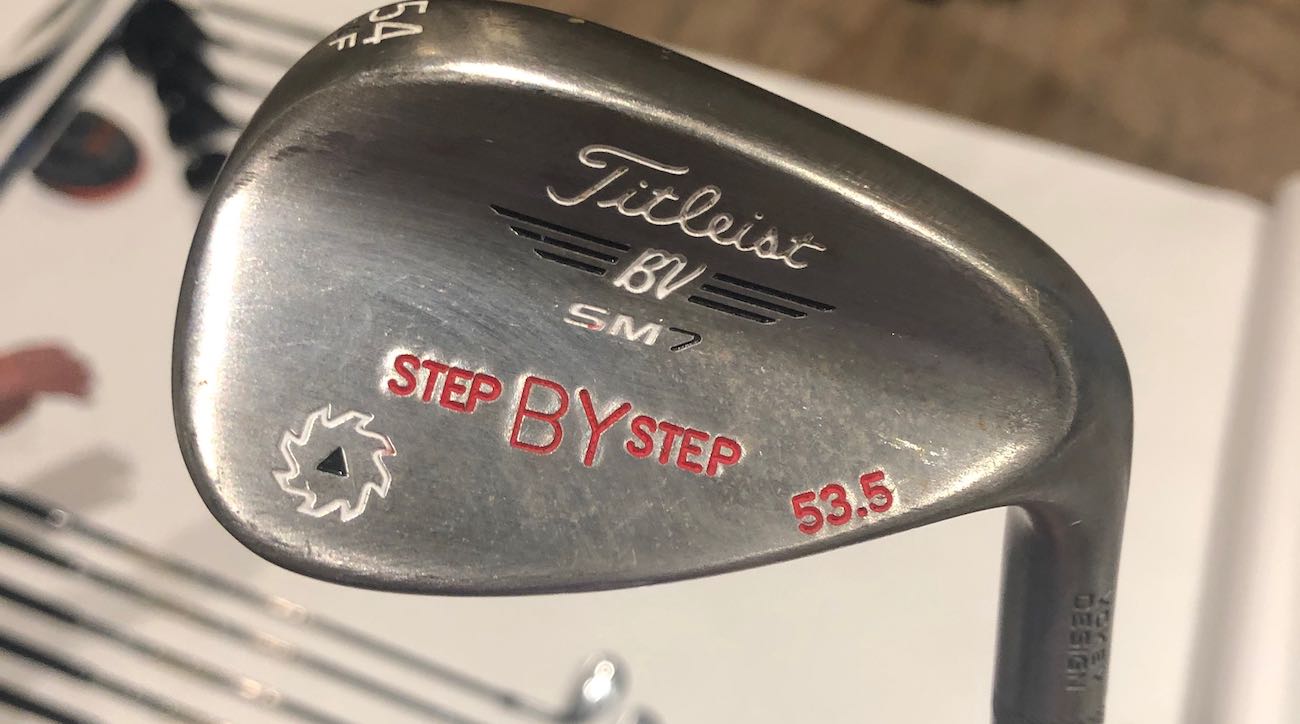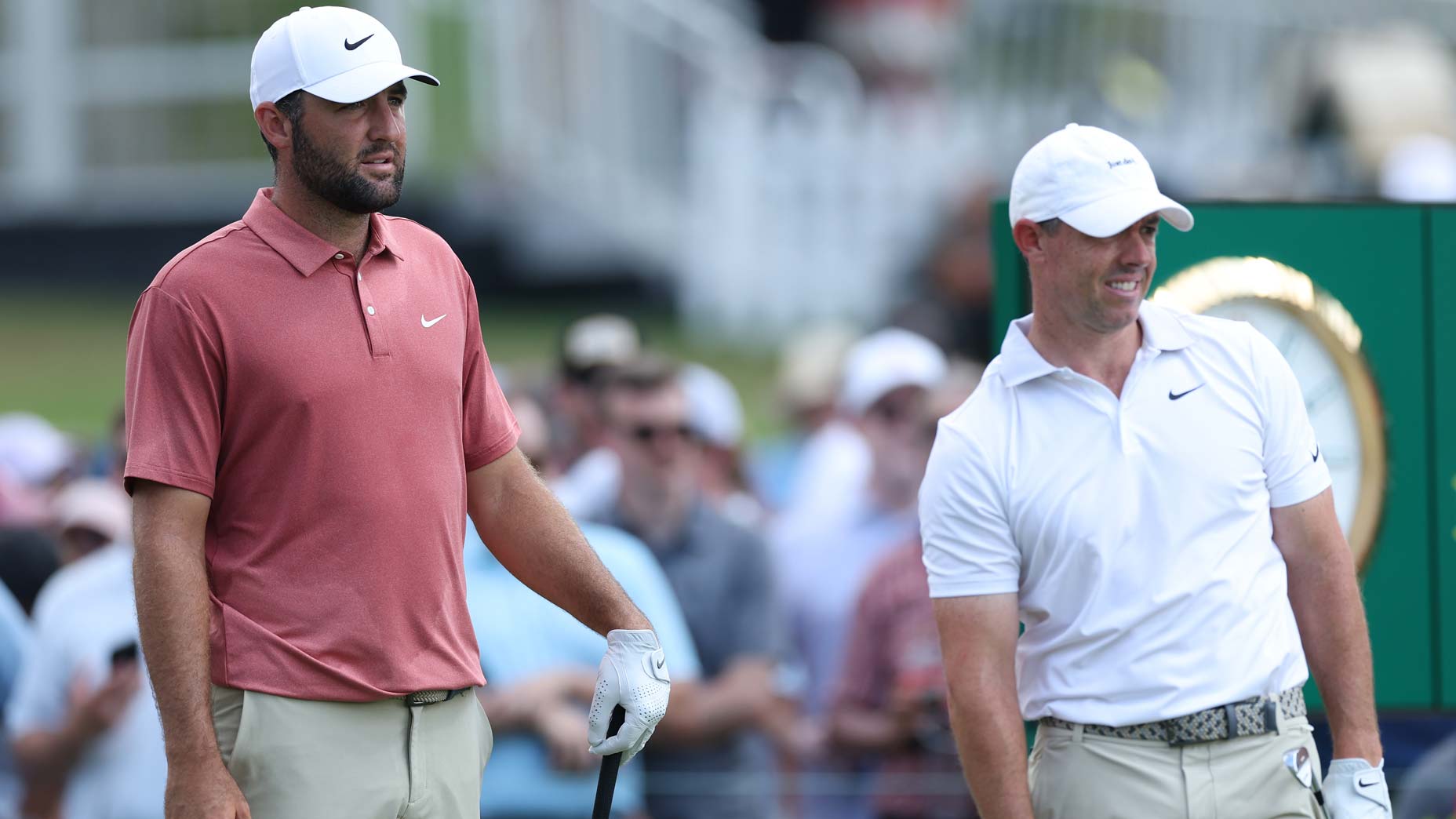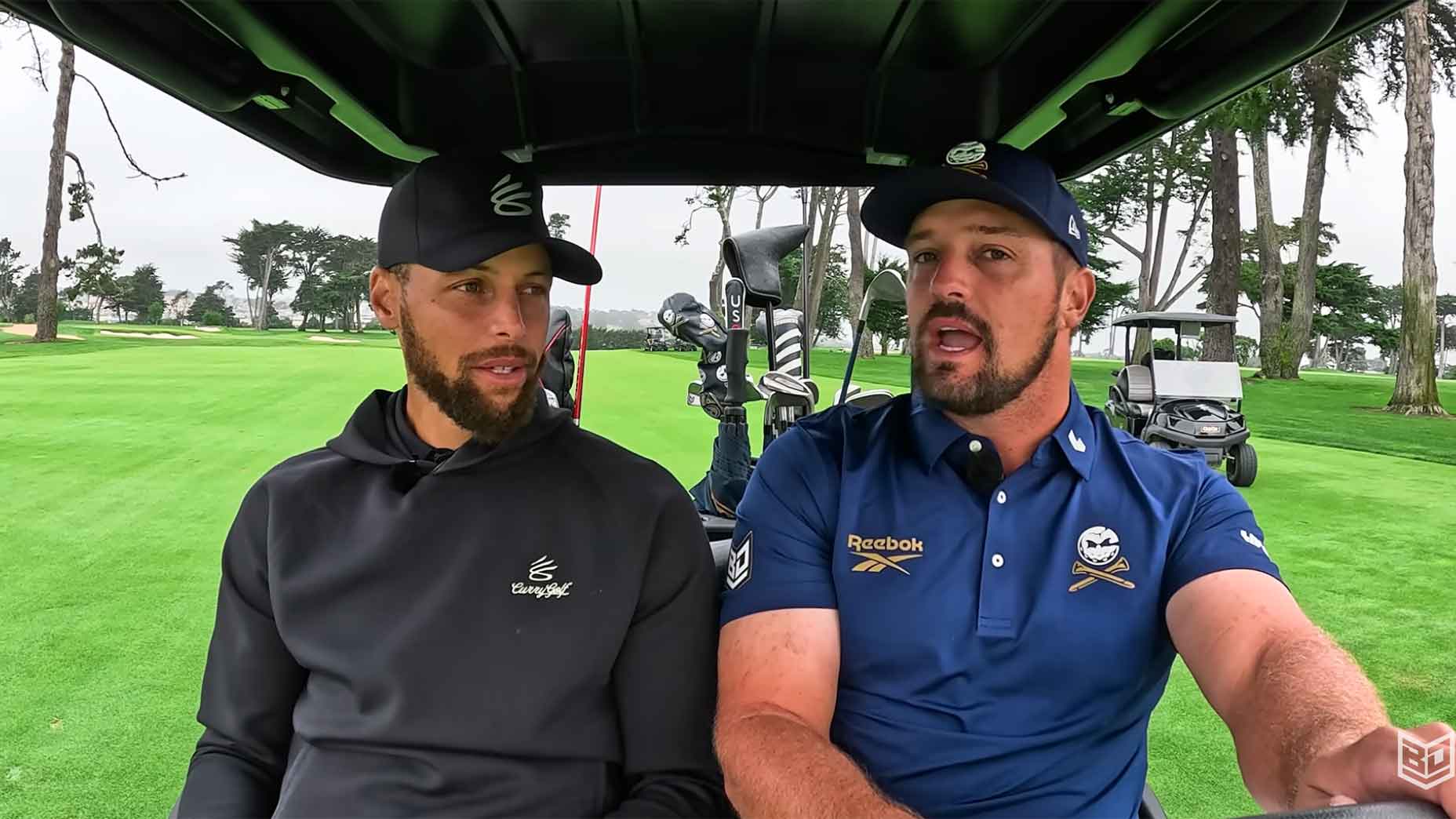 2 reasons why 2025 was one of the most important golf years … ever
2 reasons why 2025 was one of the most important golf years … ever
Gear Talk: Webb Simpson thinks there’s one glaring problem with the new distance report
Following his recent victory at the 2020 Waste Management Phoenix Open, six-time PGA Tour winner and 2012 U.S. Open champion Webb Simpson spoke with GOLF.com, and other members of the media, about all things golf equipment.
In the full Q&A session, transcribed below, Simpson tackled a number of important and entertaining topics, including his strong take on the USGA and R&A’s recent Distance Insights Project, why golfers should use more hybrids and get fit for their equipment, and the nice bottle of wine Patrick Reed owes him.
The big news this week was the USGA and the R&A’s proclamation that they feel distance needs to be stopped. What are your thoughts?
Webb Simpson: It’s a big thing right now in the golf world. I think it’s a big deal. Obviously, the USGA and R&A have done a great deal of research. No one is going to dispute that. But my takeaways are that they think that equipment technology is the main reason distance on Tour is increasing, and they’re focusing on that. That doesn’t really give the players the credit that they deserve for the hard work they put in at the gym, the advances in knowledge of the golf swing, Trackman has helped. Quite frankly, I think fans and viewers love seeing guys hit it far. For me personally, my game has never been about distance. I’ve tried to get longer and I’m doing things in the gym to help that, but there’s many ways to win at this level and be successful, not just distance. I know it seems that…guys coming out of college, they’re longer than the previous decade, or the previous generation. So distance is important, but playing in these pro-ams week-in and week-out, I never really get asked about distance. That’s not really a focal point.
I feel like our game is in as good a place as it’s ever been. I do not feel that the solution is to limit distance. I really don’t. I think it’s an asset to the PGA Tour, to people watching. Fans don’t come watch the short hitters nearly as much as they want to come watch the guys hitting it 350 yards. So yeah, I’ve got a lot of other thoughts, but that’s kind of my starter take on this.
Let me say that lengthening courses is not the answer. There’s so much evidence in my opinion that has been shown that length is not the answer. I know it’s been talked about a lot, but Erin Hills [site of the 2016 U.S. Open] is the longest course we’ve ever played; [Brooks Koepka’s] 16-under won in a major championship. And a few examples I always go back to: there were six holes at 411 yards or less at the Pebble Beach U.S. Open last summer, and the six holes played over par for the week. Hilton Head, every year, one of our shortest courses, if not the shortest, somewhere between eight and 14 under typically wins there. So you’re talking about the best players in the world, and two-to-three under a day typically wins on that golf course.
What we see is, if you narrow courses, increase the rough, make the greens fast; as long as it’s in your control – Mother Nature sometimes doesn’t let that happen – scores will get worse. And so, when I look at beautiful golf courses that have been a certain way for a long time, and we show up and they’re 500 yards longer, all for the name of distance, I think everyone is missing the point. You want to make a golf course harder? Make the fairways 8-10 yards more narrow, grow the rough up, and if you want to take it a step further, decrease the size of the greens. What you’ve done if you do that is you’ve decreased the amount of money long-term that is going to be required to take care of these golf courses. We need shorter, tighter courses and smaller greens, and I think everybody wins. I think golf is more fun.
I understand you have a steel shaft in one of your Titleist hybrids. Why does that work for you and do you suggest amateurs give that a shot?
Simpson: Yeah so I put the 4-iron hybrid in the bag, with a regular length, graphite shaft. The only downside I saw in the beginning was sometimes I would hit it and it would go too far for that yardage that I wanted. So Jim Curran with Titleist decided, “Hey, let’s cut it down a little bit. Let’s put a steel shaft in it and it will decrease the distance a little, you’ll get more control, and it will kind of act more like a 4 iron. It will feel more like a 4 iron versus another hybrid.”
We did that at Baltusrol for the 2016 PGA, and I have not – no matter how good your technology is that comes out – I can’t get it out of the bag. I love it.
The reason I love it, and the reason amateurs need to play it…unless you’re a scratch handicap or better and have really high spin rates and hit it high, you need a 3-iron hybrid and you need a 4-iron hybrid. The hybrids, in my opinion, are way easier to hit up in the air, and that’s what I was seeing with my 4 iron of my regular set. I just couldn’t get it in the air. So the 4-iron hybrid, it goes 215 yards for me, so I hit that quite a bit each week. Some weeks I hit it 3 or 4 times a day into greens. It’s been a huge asset to my bag.
Do you keep your hosel setting neutral on your Titleist TS3 driver or is it in a different setting?
Simpson: It’s funny you ask that. It changes. Throughout the year, your body changes, your swing might change, and obviously, courses and conditions change. I’ll give you an example. I played with it pretty shut – I can’t remember the exact setting – for the Presidents Cup and in Hawaii. And one day before I went to Phoenix I was hitting balls and the sun was shining on the driver face and I could really see it clearly, and I’m like, “Wow, that’s too shut for me.”
No shot shapes dictated [the change], just the look of it. So I made it a bit more square and drove it great last week. It’s fun to be able to do that because, I mean, we might show up in a month and the ball is just slicing a yard or two and I want to it draw a yard or two, and all I have to do is do one or two clicks and it’s like magic, it starts drawing a little bit.
Are there any specific changes, whether it’s the driver or really any club in the bag, that you make specifically for Augusta or for any of the majors?
Simpson: No, the only thing I make sure is that Aaron Dill can give me a fresh set of wedges, because we need as much spin as we can around those greens and into the greens. Augusta is a place where my hybrids have helped me so much. You go through the golf course, and I may hit a hybrid into 1, 4, 5, 11, 13, 15, and even 18. You need height and you need softness around that golf course, maybe more than any other golf course we play all year. I don’t need to change anything equipment-wise with my clubs, it’s just nice to have those hybrids there and a fresh set of wedges.

ADVERTISEMENT
We spoke last year and you said you were doing a little driver shaft testing and you settled on a 46-inch Graphite Design Tour AD-IZ 5X, and now you’re playing the Mitsubishi Tensei AV 65TX. What drove that change?
Simpson: Like I said, throughout the year, your body can change. You can get stronger, you can get weaker. Sometimes, for me, a club or a shaft might just cycle out to where I need something a little different. Sometimes, you try shafts and you’re just like, “Man, this feels a little better. I can feel it more in my hands,” or, “I like the way the ball is exiting a certain direction or a certain window.” And you just change for the sake of needing something different, just to change the momentum.
For me, I was in a 46-incher trying to get longer, but then, it got to a point where it just felt too long. You can’t really explain it. So we went back down to 45.25 inches. That’s where I’ve been for a while. I’ve been there for so long, I can’t see myself ever changing in lengths. JJ (Van Wezenbeeck, a Titleist Tour rep) has the perfect mix of a quarter-inch longer but it’s heavy enough to where I can feel it, and I feel like I can swing as hard as I want and I’m not losing any control over the head or the shaft in my downswing. There’s a lot of nuisances to getting fitted, but, getting fitted is so important. You see guys with their equipment sometimes in these pro-ams and you know it’s the wrong club for them and they just didn’t get fitted.
You have a mixed-model setup where you jump around from Titleist Vokey SM5 to SM7. How do you determine which wedges make the cut, and what’s that testing process like?
Simpson: I’m kind of funny about it. Some guys will just change because it’s newer, and usually it’s better. I just get really set on something I love and it’s hard for me to get it out of my hands. It’s an ongoing joke with Titleist that I would switch quicker and sooner if their previous stuff wasn’t so good. You guys laugh, and I laugh because it’s kind of funny, but it’s a good problem to have. So for wedges, I have to take it through all the short game shots: bunkers, rough, fairway, firm, soft, and then hitting wedge shots in the wind. As long as I’m seeing what I’m used to seeing—and sometimes it gets a little better, maybe a little more spin or a little more feel—I’ll switch.
I will say one thing that makes it hard for us, we’re basically playing January until the end of November. Last year it was through mid-December for the Presidents Cup, so it is hard to have time to work with new stuff. We used to have a couple of months and that’s not the case anymore. You have to be smart about when you do it, but yeah, I like to take the wedges through all kinds of shots.
When you first started getting into golf as a youngster, what was the first club you found that you really really wanted, or you had to have as a kid?
Simpson: Well, the first club that I had that I remember that was really cool was a Cobra Baffler 7-wood. It was a persimmon with [Baffler Rails] on the bottom. That was my favorite club. The second tournament I ever played, it was a 9-hole event, and a par-3 No. 10 was my first hole. I hit that Cobra to 3 feet. It was the best shot I ever hit. So I kept that club in my bag as long as I could.
But I think for me and my friends, the clubs that we kept our eyes on were the Scotty Cameron putters. Like when Tiger won the Masters in ’97 with the Teryllium insert, you know with those white balls in the back, that was all I could think about for 6 months until Christmas. I remember it was $300 at the time, which for a golf club was astronomical. So I didn’t get it for Christmas. But the following February, I go to Augusta for the first time, and they have it in the shop. I begged my dad to get it and he said, “no.”
Finally he said, “Listen, if you shoot 76 or better, I’ll get you the putter.”
So I’m eight over on the last hole, and I’m not going to shoot 76 or better. I’m in his ear. I say, “Dad, c’mon. It’s a driver-3 wood for me. If I make birdie, you get me the putter.”
He said, “Sure.”
So I hit driver-3 wood to the Sunday pin to 6 feet. Right of the hole, perfect. Right-center putt. And I missed it. I was so bummed. I think he could tell that I was so upset about the putter that I was going to forget about my whole day at Augusta. So we’re in the car ride home to Raleigh and we stop at a gas station, and he says, “Will you grab my shoes out of the trunk?” I go in the trunk and there’s the putter. That was the greatest day of my life to that point.

With all of the golf ball options and Tour prototypes, how do you decide which golf ball model to play? And I also understand you might have had an influence on Patrick Reed making a recent golf ball change?
Simpson: Yeah, so the first part is similar to how I talked through switching wedges. I have to see the golf ball perform under a few different conditions. One, I have to see how it performs all the way through the bag. I want to see what wedge shots do, short game shots, around the green, irons shots, flighted low, flighted high, and then off the tee is a little less important than with my iron shots.
For example, I messed with one of the prototypes, a Pro V1 Star maybe. It spun a little more than the ’17 Pro V1. So I tried it in 2018 – the year I won The Players – I tried it in a Tuesday practice round. I hit a shot on hole 16; we were into the wind. From me and [caddie Paul Tesori’s] calculations, a 4-iron hybrid should land on the front of the green. I hit a good, solid shot and it landed about 8 yards short. So my takeaway instantly was, “this ball spins too much for what I’m used to, so I’m not using it.” And even though I didn’t switch to it or get a new ball, it was good for me to at least rule out that option. I think for pros and amateurs alike, when they test golf balls, they need to give it a fair test – 9 or 18 holes. Even if they don’t switch to another ball, at least they have ruled out a ball.
Personally, what I’m looking for in a ball, I want it to be soft-feeling off the face. I want to have the right spin, meaning, I don’t want a ball that spins too much because I don’t want to stand on a par-3 and wonder, “If I mishit it, is it going to spin too much?” Or, “Does it have enough spin? If I hit it too good, is it going to go right through the wind?”
I want the wind to actually affect the ball some. Not a ton, but enough to where I can expect the wind to do something.
A good example, and I’ve told this story a couple times. No. 12 at Augusta last year, I’m playing with Koepka and Poulter. Tiger, Finau and Molinari are right behind me. Brooks hits first, in the water. Poulter hits next: water. And I’m in a situation where the wind is blowing 20 mph; if I had the slightest doubt in my golf ball, that would have made that shot so much harder. But I knew, ‘hey, if I flight this 8 iron a little bit low, it’s going to go through the wind enough to where I know it will get to the hole.’ I hit a little chip-flighted 8-iron to 20 feet. And I know Poults and Brooks play a Titleist, but it wasn’t about that, it was about the fact that I had that confidence knowing if I do my job, the ball is going to do its job. I know for a fact that many players on Tour who play other golf balls do not have that confidence. And that is invaluable.
Then P. Reed was funny. I blame Paul [Tesori] for this. We’re playing in Greensboro last year, and it’s the first two days. Reed normally hits that nice draw, but his ball looks a little funny in the air. It’s low and falling out of the sky. Finally, Paul goes, “What ball are you playing?”
Paul doesn’t really have a filter. He said what he said, and we realize it’s a less-spinny, more-firm ball than my ball.
Paul just said, “Why don’t you play our ball? The ’17 Pro V?”
So anyway, we gave him a dozen balls for Sunday, and he shot 63 with a bogey on 15, a par 5. And then he goes and wins next week at The Northern Trust. That shows how much a ball can matter to someone’s game. He was playing a Titleist, but it just wasn’t the right Titleist for him. Then he gets the right Titleist and goes off and has a chance to win the FedExCup, which is pretty cool.
I’m saying this publicly. Well, [Patrick] knows this. He still owes me a bottle of wine for that switch. And I haven’t gotten it yet. And I told him, it needs to be nice.
To hear more gear insights from Jonathan Wall and True Spec’s Tim Briand, subscribe and listen each week to GOLF’s Fully Equipped podcast: iTunes | SoundCloud | Spotify | Stitcher
ADVERTISEMENT





